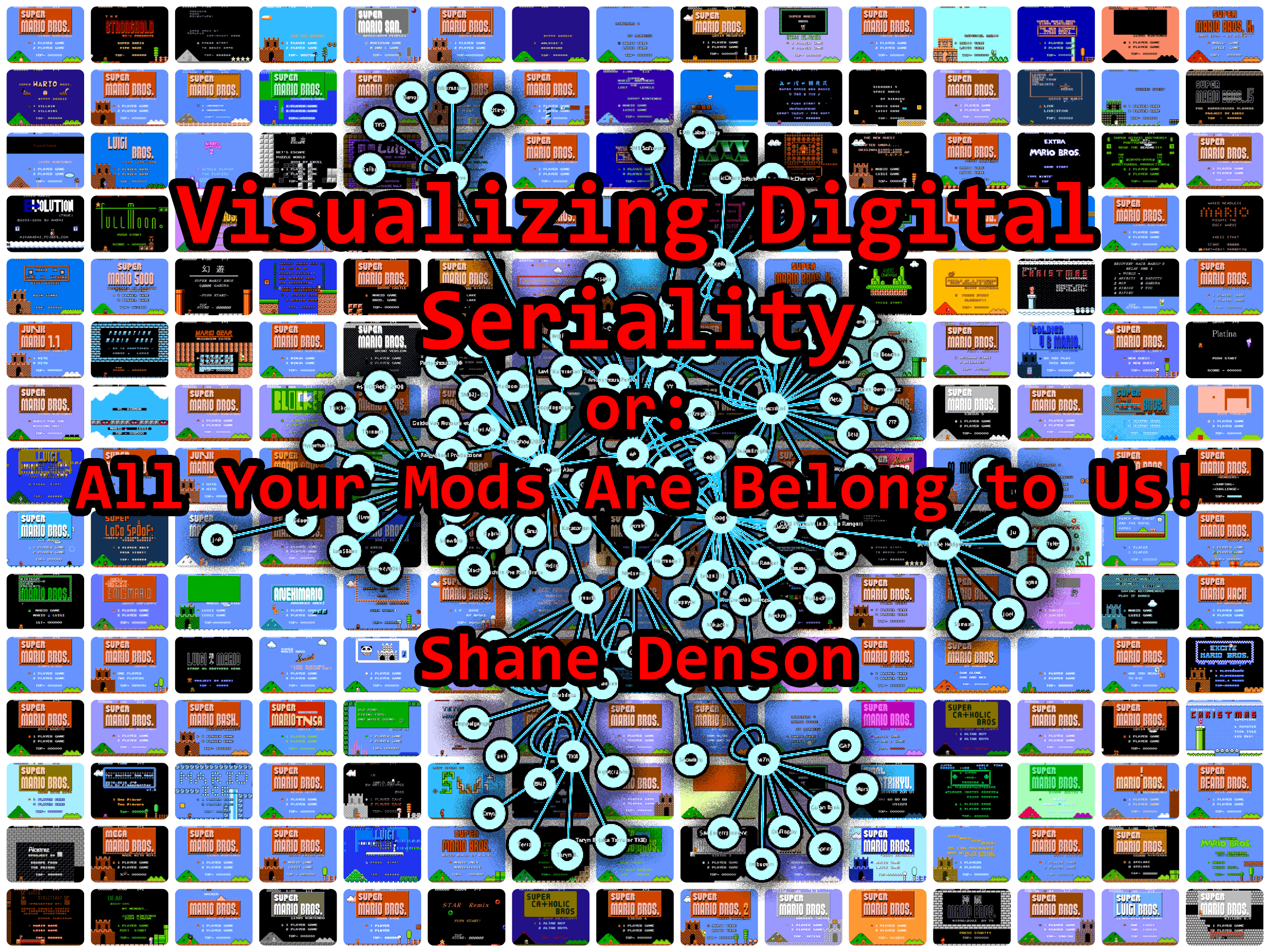
Introduction
This webtext is about seriality and serialization processes in games and gaming communities—and about the possible affordances of a digital humanities approach to studying these processes.
Seriality is, of course, a familiar feature of game franchises; Mario, Zelda, Pokemon, Tomb Raider, and the like are constituted not so much in games as in series of games, complete with sequels, spin-offs, tie-ins, and other forms of continuation. But beyond this more visible form of seriality, the serial character of games operates on a number of other levels, many of which lie outside or beyond the narratives and interfaces that shape our normal interactions with digital games: Serialization informs social processes of community building among fans, while it also takes place at much lower levels in the repetition and variation that characterizes a series of game levels, for example, or in the modularized and recycled source code at the heart of games and game engines.
In what follows, I consider how tools and methods of digital humanities—including distant reading and visualization techniques—can shed light on these processes and provide a bridge between the various levels of seriality in digital games and gaming communities. The vibrant modding scene that has arisen around the classic Nintendo game Super Mario Bros. (1985) will serve as my case study. As I demonstrate, automated reading techniques allow us to survey a large collection of fan-based game modifications, while visualization software helps to bridge the gap between code and community, revealing otherwise invisible connections and patterns of seriality.
In addition to mounting this argument about digital seriality and the merits of a digital humanities approach to studying it, this webtext endeavors further to enable users to conduct their own experiments with data-driven research methods. Thus, under the Tools rubric on the navigation bar above, readers will find a number of interactive visualizations that can be used to locate patterns of serialization in a database of 200+ fan-made game mods. These visualizations are not merely pretty pictures, and they should not be regarded as inert images that can at most communicate the results of previously conducted research; rather, they are tools in an emphatic sense: instruments of research. Together with the underlying data (also included here for users to work with in ways that might expand or challenge my findings), these visualizations can be employed for quasi-forensic purposes of discovery, comparison, correlation, and filtering, enabling insight into a large data-set and exposing the hidden connections between code and community.
I begin, in the next two pages, by providing the essential contexts for my argument: Seriality Studies and the Digital Humanities briefly outlines the reasons why digital methods may be of particular interest to research on serialized culture, while Digital Seriality introduces the various levels of serialization that are involved in digital games and which distinguish them from the serialized popular media cultures of the nineteenth and twentieth centuries.
Following this contextualization, I present a case study, Correlating Code and Community on ROMhacking.net, which demonstrates the usefulness of visualization and distant reading techniques for uncovering the multilayered serialization processes involved in a global online gaming and hacking community: a geographically dispersed community of actors whose interactions with one another are mediated at the various levels of code, gameplay, specialized tools and emulation software, text files distributed with modified game patches, and websites dedicated to the community's maintenance, growth, communication, and exchange. The case study not only illustrates the types of findings that can be expected when we apply digital tools and methods to the study of serialization processes in digital media cultures, it also aims to demonstrate more forcefully the need for digital methods in research on digital cultures. The communities under consideration here are technically savvy, but many of their interactions remain largely invisible if we do not use technical tools like those employed within the community. Together with the appendix of Tools used to conduct this research, the case study and this webtext more generally argue for employing digital methods in digital media studies. In the process, this webtext uncovers a central thread of serialization at work in popular culture generally—but also operative more specifically, as in the case of gaming cultures, in the re-coding of community in the age of digital seriality.